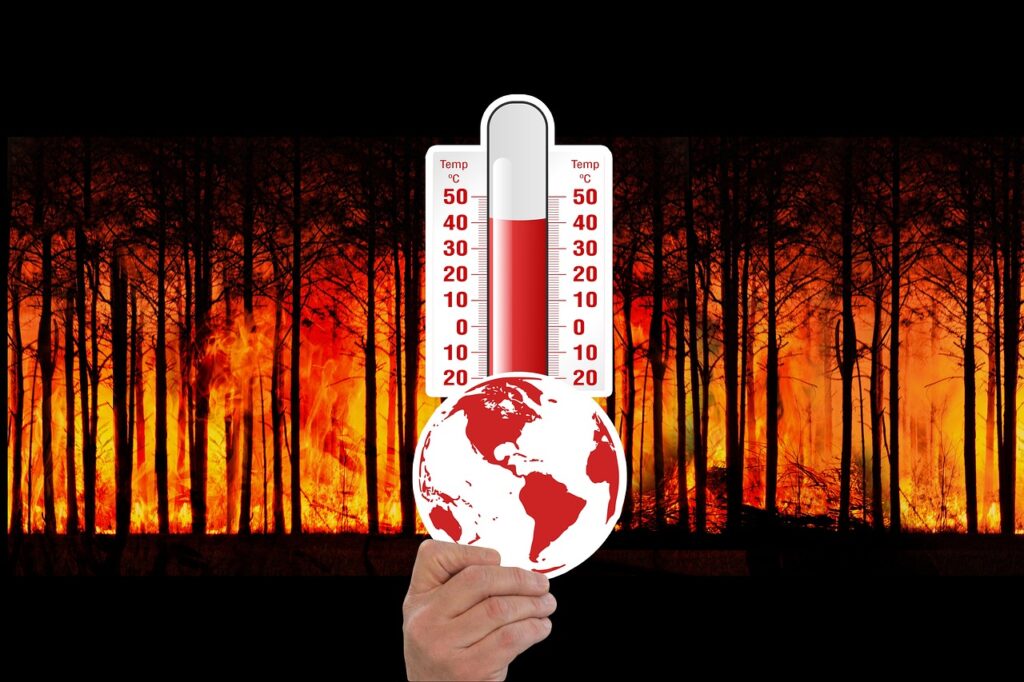
Climate change can cause wildfires by creating conditions that are more favourable for the ignition and spread of fires, such as hotter and drier weather, more frequent and intense heat waves, and longer periods of drought. Image: Gerd Altmann
By Mariana Meneses and James Myers
In November 2022, the team led by Maria A. Martin, a post-doctoral fellow at the Potsdam Institute for Climate Impact Research in Germany, published a paper in the journal Global Sustainability summarizing what they believe to be the most important findings in the field of climate change research in 2022.
The paper highlights the inadequacy of existing adaptation efforts in reducing risks associated with current and future climate changes. Additionally, climate change is shown to increase human social and economic vulnerability, particularly in coastal regions. Current land use practices are identified as a significant source of greenhouse gas emissions, while adoption of sustainable land use practices has the potential to help achieve zero carbon emissions by 2050. Many challenges exist, however, in reversing habitat loss and lowering methane and nitrous oxide emissions.
The researchers show that sustainable finance options such as green bonds, climate finance, and socially responsible investment are gaining traction but may not be sufficient to meet climate targets.
They conclude that private sector must decarbonize, promote sustainable development goals, and reform climate metrics, besides disclosing governance practices. Losses and damages from climate change are identified as being a present reality, particularly for low-lying coastal areas and heat-stressed regions, with financing being a significant barrier to addressing them. The paper also emphasizes the need for inclusive decision-making processes to achieve equitable outcomes and removing structural barriers to accelerate mitigation and limit global warming to below 2°C above pre-industrial levels.
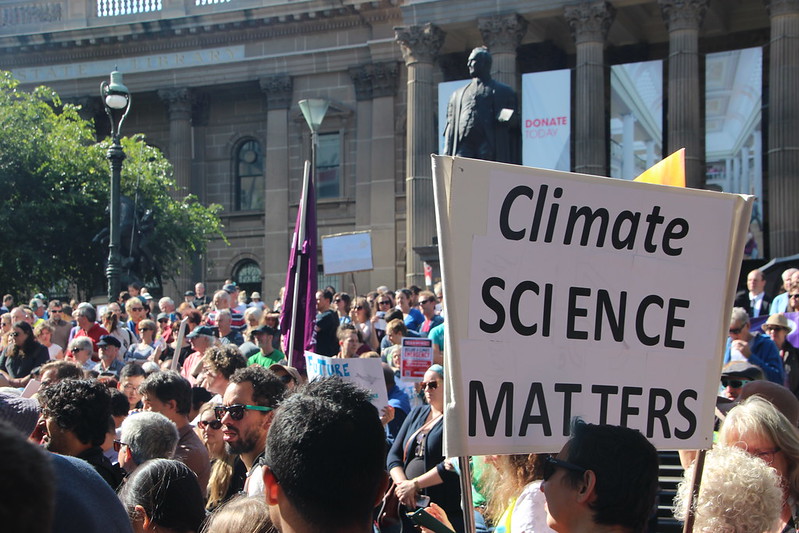
Melbourne #MarchforScience on #Earthday 2017. Photo: John Englart
The awarding of the 2021 Nobel Prize in Physics for work related to climate change underscored the robustness and interdisciplinary nature of climate research.
Climate change is a complex and pressing issue that requires insights and contributions from many fields, including a solid basis in physics, biology, chemistry, and social sciences. The work of climatologists is critical in advancing our understanding of climate systems and developing solutions to mitigate its damage, and the Nobel recognition further highlighted the significance of climate research and its benefits to society.
The Nobel Prize was awarded to three scientists for their contributions to our understanding of complex physical systems, which include the Earth’s climate.
It is thanks to scientists like them that we can predict global warming – and attest to mankind’s responsibility as a significant cause.
The prize went to Dr. Syukuro Manabe, senior meteorologist at Princeton University, US, Dr. Klaus Hasselmann, professor at the Max Planck Institute for Meteorology, Germany, and Dr. Giorgio Parisi, professor at Sapienza University of Rome, Italy, for their “groundbreaking contributions to our understanding of complex physical systems,” says the official Nobel Prize website.
The Nobel Prize was divided into two parts. The first half was awarded to Dr. Manabe and Dr. Hasselmann “for the physical modeling of Earth’s climate, quantifying variability and reliably predicting global warming.” The other half went to Professor Parisi “for the discovery of the interplay of disorder and fluctuations in physical systems from atomic to planetary scales.”
These prize-winning works investigate complex physical systems, including the Earth’s climate.
Dr. Parisi was awarded for his work in the theory of complex systems, while Professors Manabe and Hasselmann were rewarded for their pioneering work developing climate models. Dr. Manabe showed that increased carbon dioxide concentration in the atmosphere causes temperature rise, while Dr. Hasselmann developed methods to identify specific marks left in the climate from both natural phenomena and human activities, allowing for the measurement of the human component of climate change. Dr. Parisi discovered hidden patterns in disordered complex materials, contributing to the understanding of complex materials and phenomena across various fields.
It took the Nobel organization several decades to recognize the contributions of Dr. Manabe, Dr. Hasselmann, and Dr. Parisi, despite their groundbreaking work dating back to the 1960s and 1980s.
According to Dr. John Wettlaufer, member of the Nobel Committee for Physics, who was interviewed immediately after the announcement, the delayed recognition may be due to the fact that the results of climate predictions are not immediately visible like those of laboratory experiments. However, he noted that the delay only made the prize more fitting as it acknowledged the sustained contributions of these scientists over time.

Dr. Syukuro Manabe was the first scientist to demonstrate that increasing the concentration of carbon dioxide in the atmosphere leads to an increase in the planet’s temperatures. In the 1950s and 1960s, the pioneering work of Dr. Manabe and colleagues confirmed that the observed temperature rise across the globe was, indeed, due to an increase in carbon dioxide, and not due to the Sun’s radiation. His work was fundamental for the later development of climate models. Photo: Bengt Nyman
The 2021 Nobel Prize in Physics Committee reasserted the importance of truly listening to what the greatest scientists in the world are saying: global warming is a reality.
More so, it is a human-made reality that we need to start taking more seriously than we have until now. The 2021 awards made a clear statement, one in line with the declaration of UN Secretary-General António Guterres that, “it’s time to go into emergency mode,” and international political attempts at it have not been good enough. To Dr. Niklas Hoehne, a climate researcher at Wageningen University in the Netherlands, countries need to come forward and truly commit to tackling climate change.
In February 2022, the Intergovernmental Panel on Climate Change (IPCC), the United Nations body responsible for evaluating scientific research on climate change at a global level, released a report warning of the dangers of human-induced climate change.
Written by 270 authors from 67 countries, the report highlights that climate change is already affecting the lives of billions of people around the world, with those who are least able to cope being hardest hit. The report stresses the need for immediate action to adapt to climate change and reduce greenhouse gas emissions, especially for those in lower-income populations. The IPCC report also recognizes the importance of safeguarding and strengthening nature in securing a livable future. It notes that tackling climate change will involve everyone, from governments to the private sector and civil society, working together. Cities are hotspots of climate change effects and risks, but also offer opportunities for climate action. The report provides extensive regional information to enable climate-resilient development.
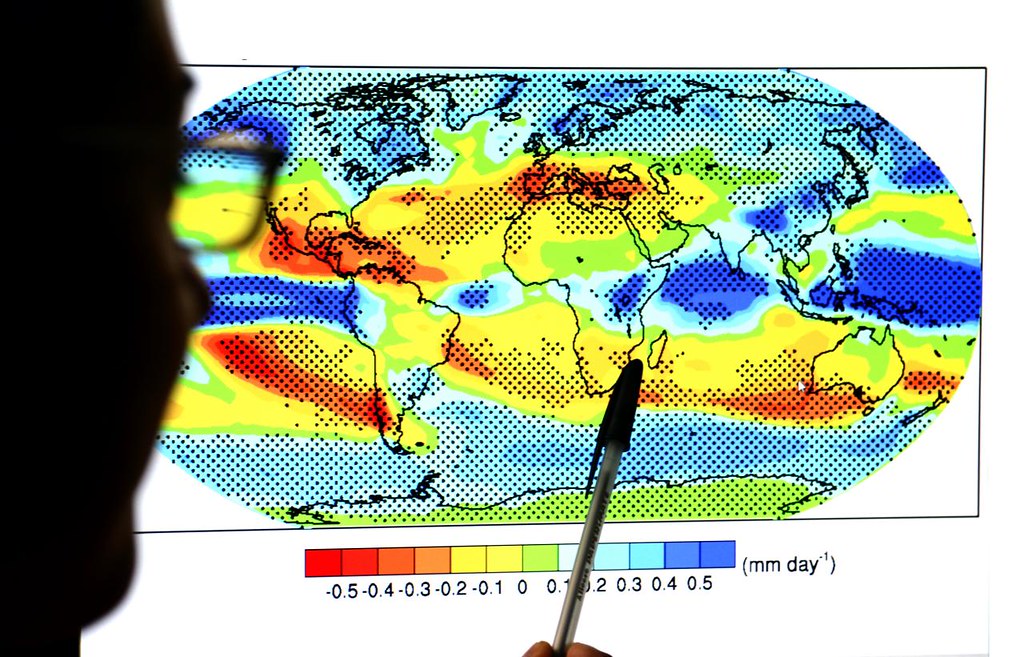
Illustration of climate change model. Photo: Neil Palmer
In September 2022, the International Energy Agency (IEA), the International Renewable Energy Agency (IRENA), and the UN Climate Change High-Level Champions released a report warning that there’s a “collaboration gap” between countries in dealing with climate change.
The report explains that countries need to work together more closely to make clean energy technologies more affordable and accessible in key sectors such as power, transportation, steel, hydrogen, and agriculture. These sectors are responsible for almost 60% of global greenhouse gas emissions, and they could contribute the most to reducing emissions to the levels necessary by 2030, to limit global warming below 2°C above pre-industrial levels, and to pursue efforts to limit the temperature increase even further to 1.5°C above pre-industrial levels, in order to avoid the most severe impacts of climate change.
While there has been some progress in these sectors, such as a doubling of electric vehicle sales and an 8% increase in global renewable energy capacity in 2022, the report stresses that greater international cooperation is essential to meet climate commitments. To this end, the report offered 25 recommendations for leaders to discuss at the Global Clean Energy Action Forum in September 2022.

Trends in electric car registrations and sales share in each of China, United States, Europe and other regions, 2016-2021. The IEA reports that “Electric car markets are seeing exponential growth as sales exceeded 10 million in 2022. A total of 14% of all new cars sold were electric in 2022, up from around 9% in 2021 and less than 5% in 2020.” Source: International Energy Agency (IEA)
The following actions could help reduce greenhouse gas emissions and mitigate climate change:
- Demonstrating and testing low-carbon power systems
- Creating new cross-border super-grids to increase the use of renewable energy
- Establishing international centers of expertise to help coal-producing countries transition away from coal
- Targeting net-zero emissions for road vehicles and investing in vehicle charging infrastructure
- Mobilizing investment in vehicle charging infrastructure
- Boosting battery recyclability and researching alternative chemistries for batteries
- Driving demand for, and deployment of, low-carbon hydrogen
- Committing to purchasing near-zero emission steel
- Investing in agriculture technologies to reduce emissions from livestock and fertilizers
- Developing international standards for monitoring and reporting on the state of natural resources.
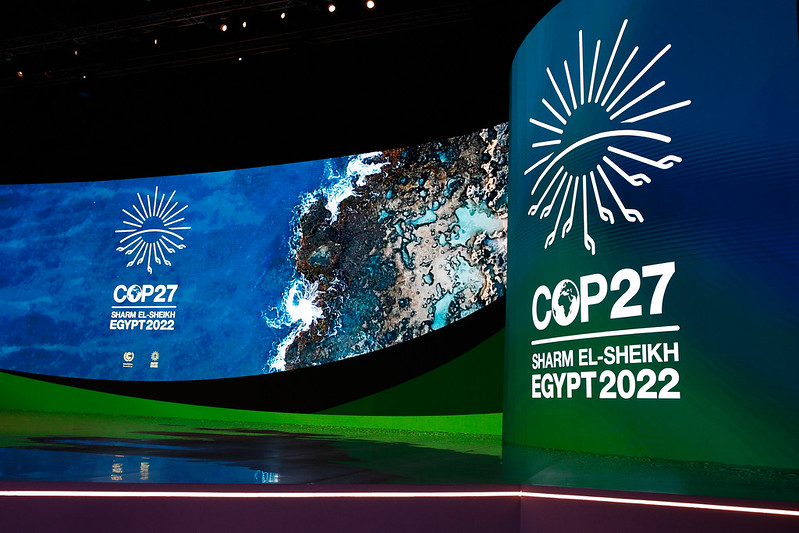
COP27 (2022 UN Climate Change Conference) took place in November 2022, under the presidency of the Egyptian Minister of Foreign Affairs, with 92 heads of state and an estimated 35,000 representatives, or delegates, of 190 countries attending. (Wikipedia) . Image: UNclimatechange
COP27 ended with an historic breakthrough to assist vulnerable countries in dealing with the losses and damages resulting from climate change.
However, the negotiations also disappointed many actors by not including any new significant measures to reduce emissions, which is essential to keep the global temperature increase below 1.5°C.
According to the World Resources Institute (WRI), the climate conference was the stage for some noteworthy moments, such as the visit of the elected president of Brazil, Luiz Inácio Lula da Silva; the attention given to the Bridgetown Initiative, by the Prime Minister of Barbados, Mia Mottley, which calls for reforms in the global financial system; and the resumption of climate discussions between China and the United States. Although there were considerable geopolitical differences in the 2022 summit, the meeting showed that international cooperation regarding climate change can still generate gains, as demonstrated by the agreement on funding for losses and damages. COP28 in 2023 will be an opportunity for this cooperative action to go even further.
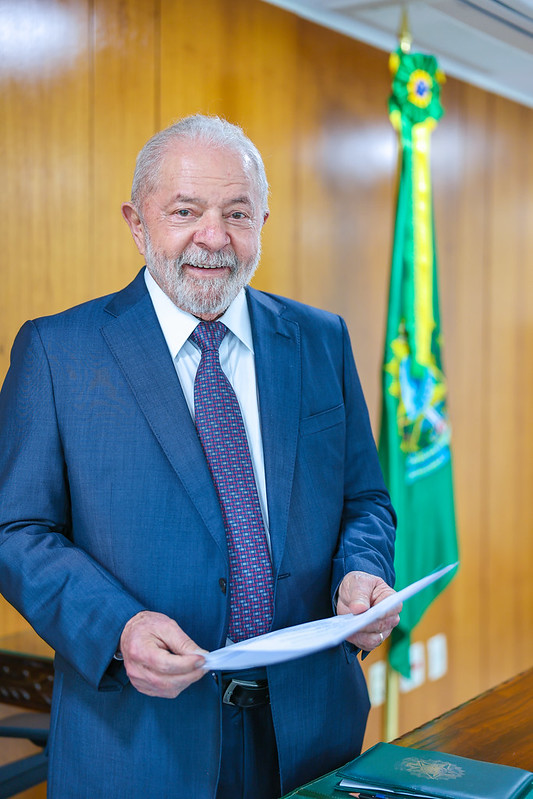
“No one is safe. The climate emergency affects everyone, although its effects impact those who are most vulnerable,” said Brazilian President, Luis Inácio Lula da Silva, at COP27. Image: Palácio do Planalto
The WRI’s report COP27: Main Results and Outlook for 2023 summarizes the outcomes of COP27, and outlines the actions required to address climate change. The report also highlights a $3.1 billion plan to strengthen countries’ capacity for extreme events.
However, there was limited progress towards adapting to climate change effects, with developed countries failing to double adaptation funding by 2025, and no Global Adaptation Goal defined. Concerns about carbon market rules were raised, but decisions on double counting emissions were not made. COP27 also made limited progress on climate financing, with developing countries criticizing the lack of transparency and funding by loans instead of grants. There was agreement to strengthen 2030 targets to align with the Paris Agreement of 2015, limiting global warming to 1.5°C, but urgent action is needed to reduce emissions.
Double counting refers to the potential problem of counting the same emission reduction in two different places or by two different parties. In the context of carbon markets, it means that a reduction in emissions could be claimed by both the country or organization that made the reduction and by another party that buys or uses the associated carbon credits. This could lead to a situation where the actual reduction in emissions is less than claimed and undermine the integrity of the carbon market.
Still, according to the report, discussions on shifting from fossil fuels were delayed until COP28. The United Nations’ Global Stocktake, which assesses progress towards climate goals every five years, shifted from technical to potential political outcomes to promote more action, cooperation, and sectoral support. Several African initiatives, including a $2 billion funding mechanism for restoring degraded land, were launched, and COP27 encouraged countries to use nature-based solutions for climate change, prioritize the UN Biodiversity Conference, and create a treaty to stop biodiversity loss.
The Global Stocktake is a process that was established under the Paris Agreement on climate change and provides a comprehensive assessment of collective progress towards the Agreement’s long-term goals of limiting global warming to well below 2°C above pre-industrial levels and pursuing efforts to limit warming to 1.5°C. It covers areas such as mitigation, adaptation, finance, technology development and transfer, capacity building, and transparency of action and support. The Stocktake is intended to promote greater ambition and cooperation among countries and sectors and inform the development of more effective policies and measures to address climate change.
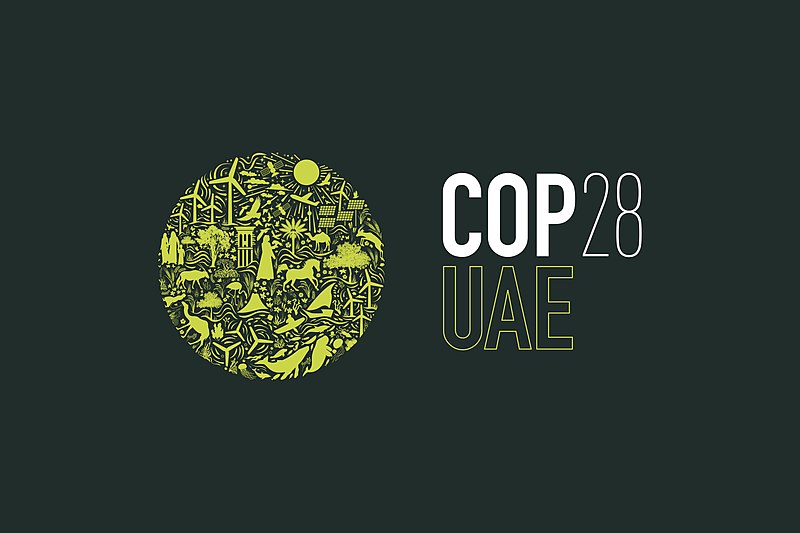
“The 2023 United Nations Climate Change Conference, more commonly referred to as COP28, will be held at the Expo City, Dubai. The conference has been held annually since the first UN climate agreement in 1992. It is used by governments to agree on policies to limit global temperature rises and adapt to impacts associated with climate change.” Credit: Wikipedia
More recently, in March 2023, the UN Environment Programme released the Climate Change 2023: Synthesis Report, which is based on the work of hundreds of scientists, and confirms human responsibility for global warming, causing extreme weather events. It emphasizes the need to limit global warming to 1.5°C, consider climate justice, and share best practices, technology, policy measures, and finance to decrease carbon footprint and prioritize climate risk reduction. The report provides important scientific input for COP28 and the Global Stocktake.
According to the host country’s website, COP28, to be held in the United Arab Emirates from Nov. 30 to Dec. 12, 2023, will be a significant milestone in evaluating the world’s progress on the Paris Agreement. The Global Stocktake will assess and align climate action while identifying measures to bridge gaps. The Presidency aims to create a clear action plan with only 7 years left to halve emissions. COP28 UAE presents a great opportunity to accelerate climate action, as well as to operationalize the loss and damage funding mechanism for vulnerable countries.
Looking to COP28, we must recognize the importance of climate research, address critical challenges, and take bold action to mitigate climate change effects. COP28 commitments are critical in shaping a sustainable future. Let’s approach this challenge with optimism, determination, and a renewed commitment to building a better world for ourselves and future generations. Together, we can create a more sustainable and equitable world, one that prioritizes the health of our planet and the well-being of all its inhabitants.
Changing Mindsets and Harmonizing Human Technology with Nature’s Technology
Want to learn more about this topic? Check our first edition’s article on extreme weather, where we opened a discussion on how humans are changing the biosphere and causing climate change. We compared inaction in restoring nature’s balance to playing jenga with weather patterns, at the risk of instability creating self-reinforcing feedback loops.
There is still time to avoid creating these devastating effects, to protect our capacity and hope to thrive as a species, and to demonstrate natural intelligence in defending life on Earth as a whole. It is so encouraging to see many dedicated and passionate citizens and scientists – and most especially youth – caring now more than ever before about preserving Nature.
There can be little doubt that the solution to the climate crisis will require the use of technology, and we can acknowledge that our advanced level of technology was achieved using processes that contributed to the climate crisis in the first place.
To make the phones practically everyone now carries, metals were mined and processed in factories that produced pollution. The majority of the massive energy consumption of the data centres, which transmit our e-mails and text messages and videos and cryptocurrencies across the planet every second of every day, is not generated from renewable resources. Few of the millions upon millions of computers, tablets, and phones discarded each year, to be replaced by the latest models, are recycled.
However, to the same extent that technology contributed to climate change, technology can be developed to remediate the damage and prevent environmental catastrophes for the well-being of all humans who call Earth home. The question of how quickly mindsets can change, to redeploy investments in technology of destruction to technology that is in harmony with the technology of Nature, may be the most crucial question of our time. As the source of us and our technology, Nature’s own technology must surely be the pre-eminent technology of all time.
It’s a question not only of survival, as essential as that is. It is also an ethical question, a matter of how we fulfill our responsibilities to the children of the world and to their children. Maybe, if we put our minds to it, we can use the incredibly powerful technology and knowledge that we have developed to ‘go back in time’, and undo some of the changes. We may also find, at the same time, another valuable prize: more sustainable ways of ‘development’, to everyone’s future benefit.



